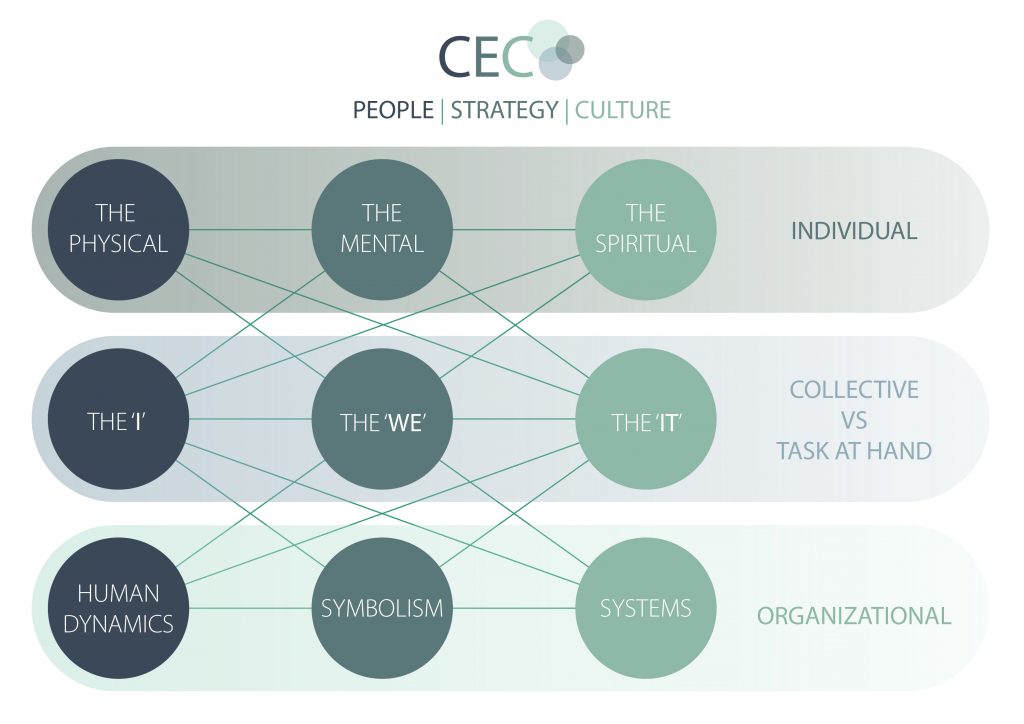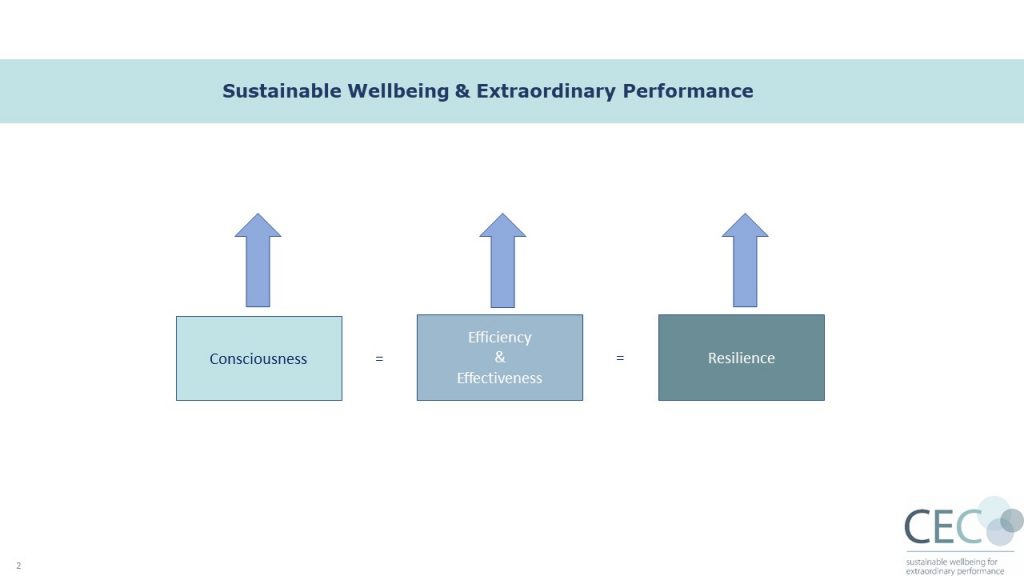I will start with a short description of current corporate context:
Growing complexity and unpredictability, technical innovation revolution, or tsunami even, with unknown consequences for business and employees, increasing pressure on targets and predominant focus on shareholder value.
It’s a huge challenge to keep on differentiating or competing on knowledge which is widely available and accessible through internet.
Standing out from the crowd
So given this context, how can you still differentiate from competition? The WHAT will always be important: what products or services will you provide your customers? Yet the HOW is becoming increasingly important and that’s where we can distinguish ourselves from other corporates.
- Are we operating with the highest levels of efficiency and effectiveness?
- Do we address potential tensions when they occur?
- To what extent do we feel safe enough to speak up in the moment?
Continuously optimising your corporate culture on levels of psychological safety, trust, efficiency and effectiveness will have an impact on your fitness as corporation. It will also have an impact on your level of satisfaction and happiness of employees. Which in its turn will contribute to talent attraction and retention; a hot issue these days with the new generations of employees.
So how do we address this complex context and these current corporate dynamics?
I would like to introduce three sets of three dimensions that have proven to be very effective in addressing the above. I call them the “Powerful Trinities”!

The Physical, The Mental and The Spiritual
When we strive for corporate fitness, one of the most valuable attributes is the employees, the people. Even though automation is happening all around us, human capital will always be essential for high performance.
How do we optimise human capital? First of all we need to increase the levels of awareness of the leaders. Becoming conscious of the three dimensions indicated here above. What buttons are on your personal dashboard of effectiveness and efficiency as a leader?
The Physical:
How fit are you really? When do you feel energised and full of power?Investigating, exploring and becoming aware on topics of food, movement, sports, muscles, aches and pains, sleep patterns, stiffness, flexibility, breathing…. These are just a few elements under the dimension of The Physical.
Optimisation through experimenting is key: how do I feel after a certain meal, a workout, a massage, yoga, a breathing session, and what has been the effect on my levels of energy?
The Mental:
In the dimension of The Mental we can distinguish the following elements: thought patterns, mindsets, emotions, triggers, expression, human interactions.
Here also, it is all about becoming more aware. The challenge is to not judge the findings but to optimise when you yourself as a leader desire to do so, as well as accepting the consequences of your choice.
Mirroring and coaching is essential for a deeper awareness of Self. Recognizing and understanding where patterns and behaviours come from and what they serve.
The Spiritual:
In this dimension it is all about deeper reflection. We are able to detect imbalances in our human system through meditation, rituals and systemic dynamics.
This dimension has been increasing in popularity in the recent years, for example through mindfulness and meditation. This can be expanded into what we like to call Ancient Eastern Wisdom. The purpose of including this dimension is to develop the possibilities for insights and establish areas for personal growth.
All three dimensions are interlinked and integrated.
An imbalance in either one of the dimensions has an effect within the other two. Our philosophy illustrates that it doesn’t matter so much through which door (dimension) you step towards the possibility for increased awareness, just pick one that feels good to you in the moment and start your journey there.
This holistic approach for increased awareness through the Physical, The Mental and The Spiritual has proven to be very effective and efficient when it comes to desired transformations.
When the level of awareness as a collective of leaders is increased within an organisation it has a measurable positive effect on the results of that very organisation. The higher the awareness of the leaders (and all employees for that matter), the more efficient and effective the human dynamics, and the better the results.

The I, the WE and the IT
The second set of three dimensions, I would like to present the distinction of three equally important elements that should strive for balance at all times:
The I-dimension:
In the dimension of the “I” is all about how honestly and openly I can express how I feel. In order for leaders/employees to express how they feel they need to feel safe in their environment. This so-called psychological safety is essential for effective and efficient corporate cultures.
For leaders to be able to express themselves safely they also need to increase their awareness of their feelings at all times. This is a practice that can be trained. In every moment being able to check in with yourself to explore how you are feeling, might sound exhausting yet can be very effective once accustomed to it.
The WE-dimension:
Similar to the I-dimension, it is essential to become aware of the “WE” dynamics in a team or organisation. How are we operating as a team? Do we address all tensions when they occur? Are there any undiscussables? Can we express ourselves at all times, whilst feeling safe because we know we will not be judged yet as a team we focus on how to improve our collective efficiency and effectiveness as a contribution to the whole?
The IT-dimension:
This “IT” dimension probably is a relief to a lot of leaders: finally we are talking about what needs to be done! Understandably so, in fact in most cases the reward systems in organisations are solely based on this dimension: the output, the targets, the shareholder value!
In most organisations the focus is predominantly on this dimension as leaders are not sufficiently aware of the potential positive impact the other two dimensions can have on the IT-dimension. The I and WE dimension are all about creating higher levels of trust in the organisation. And the higher the levels of trust, the more efficient and effective we will be as a team and therefore the more likely we will be to have more impactful contributions to the output (the IT).
When we address all three dimensions, we are addressing not only the WHAT yet also the HOW! Initially it might feel like a waste of time as we cannot wait to answer to our impatience, eagerness and drive to make a difference and start doing. With an equal split of focus on all three dimensions the doing actually becomes a lot more efficient and effective!

Human Dynamics, Symbolism and Systems
The third and final set of three dimensions I want to address are the key elements of what we call corporate culture. When we strive for sustainable high performance, the set out strategy is very important yet the culture that fuels the strategy is even more important. It is only when both strategy and culture are aligned and supportive to each other in line with the purpose of the organisation that sustainable high performance can be reached.
When we zoom in on the different aspects of culture we can distinguish the above indicated set of three.
Human Dynamics:
This dimension is not only about skills, as is widely misunderstood. What we mean by human dynamics goes beyond skills only. It includes basically what I described above in the first two sets of three dimensions: The Physical, The Mental and The Spiritual as well as the I and the WE-dimensions and all their attributes.
Symbolism:
A highly underestimated and undervalued dimension through which we can create a very positive impact and contribution on desired corporate culture. We are not always fully aware of these elements yet they unconsciously impact us all the time.
Let me give some examples:
The interior design of the offices: When a corporate value is all about openness and transparency yet the offices are all brick walls, no windows and closed doors, your symbolism is working against your desired culture.
Who gets promoted? Who gets the corner office? Who has a reserved parking space?
What does our logo look like and is it representing our values?
When we are aware of the potential positive impact of symbolism we can not only adjust yet also create symbolism in support of our desired corporate culture.
Systems:
The third and final element of this set of three is called systems and is perhaps the more tangible of the three. Sometimes this is the dimension through which a desired cultural transformation is initiated. For example, the implementation of SAP or any other software system, or reward system for that matter. The building of a new high-tech production plant is another example.
These examples can definitely add to the desired efficiency and effectiveness in an organisation yet they never will if not integrated with the other two dimensions in this set of three: Human Dynamics and Symbolism.

A holistic approach
Fast and successful cultural transformations have been established only when sufficient focus was spent on all three dimensions. Leaving out one or two will have a negative impact on establishing, and above all sustaining, the desired culture.
This is the reason why 70% of all desired transformations fail.
So, by consciously addressing these so called powerful trinities as an integrated approach and by continuously measuring the development in each of the dimensions, you will significantly increase the levels of awareness with and amongst leaders/employees and with that the levels of efficiency and effectiveness.
This is something that cannot be copied that easily by your competitor as it is about the HOW and to a lesser extend the WHAT. It also taps into the challenges around talent attraction and talent retention. Corporate cultures with higher levels of awareness in and around these Powerful Trinities are able to contribute to the sustainable wellbeing of their leaders and employees for extraordinary performance.
If you would like to hear more about the Powerful Trinity approach, please contact us.



